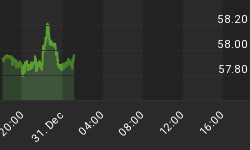Below is an excerpt from a commentary originally posted at www.speculative-investor.com on 25th September 2014.
It is widely believed that silver outperforms gold during bull markets for these metals, but that's only partially true. It's true that silver tends to achieve a greater percentage gain than gold from bull-market start to bull-market end. It's also the case that silver tends to do better during the final year of a cyclical bull market and during the late stages of the intermediate-term rallies that happen within cyclical bull markets. However, the early stages of gold-silver bull markets tend to be characterised by relative strength in gold. This is a point we've made in the past, including in TSI commentaries earlier this year, but warrants revisiting due to the recent price action.
The point we are trying to make is established by the following long-term chart of the gold/silver ratio. The boxes labeled A, B and C on this chart indicate the first two years of the cyclical precious-metals bull markets of 1971-1974, 1976-1980 and 2001-2011, respectively. Clearly, gold handily outperformed silver during the first two years of each of the last three cyclical precious-metals bull markets that occurred within secular bull markets. Therefore, while silver's recent weakness relative to gold certainly doesn't guarantee that a new cyclical bull market began last December, it is not inconsistent with our view that a new bull market began at that time.

The above chart indicates that this year's continuing upward trend in the gold/silver ratio (continuing weakness in silver relative to gold) is not in conflict with the view that gold commenced a cyclical bull market last December and is working its way through a lengthy basing process. But what about silver's recent break to a new bear-market low in US$ terms? Does this negate the cyclical gold bull market view?
The answer is a qualified no. Silver's breakdown is definitely not, in itself, a reason to believe that the metals are immersed in an extended basing process, but it is also not unprecedented for the early part of a cyclical gold bull market. As evidence we present the following chart showing how gold and silver performed during 2000-2004. Notice that gold made its ultimate bear-market bottom (and commenced a new cyclical bull market) in February of 2001, but silver didn't make its ultimate bear-market bottom until November of 2001.
Silver's performance in November of 2001 is another example of a long-term decline ending soon after an important support level is breached.

We aren't offering a free trial subscription at this time, but free samples of our work (excerpts from our regular commentaries) can be viewed at: http://www.speculative-investor.com/new/freesamples.html
















